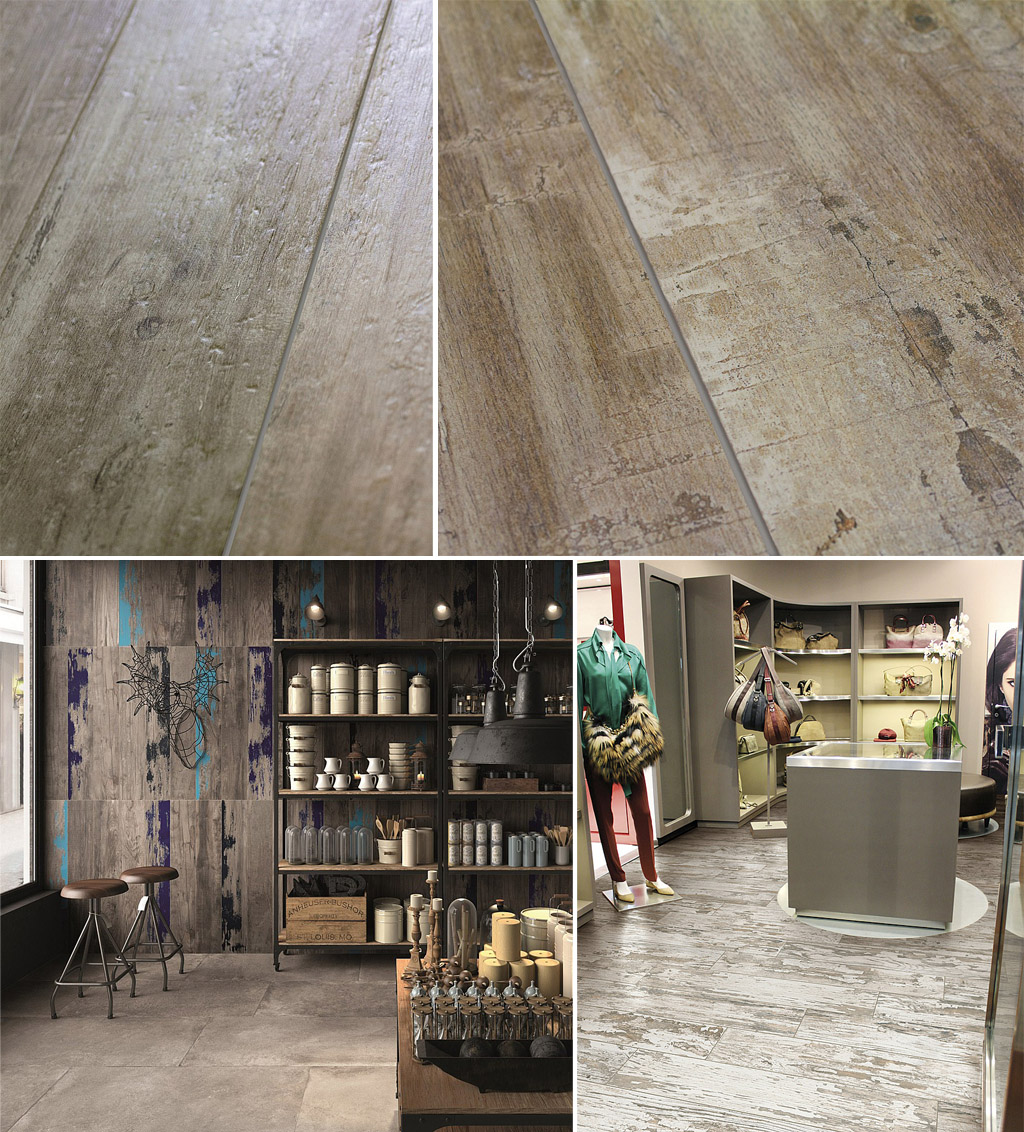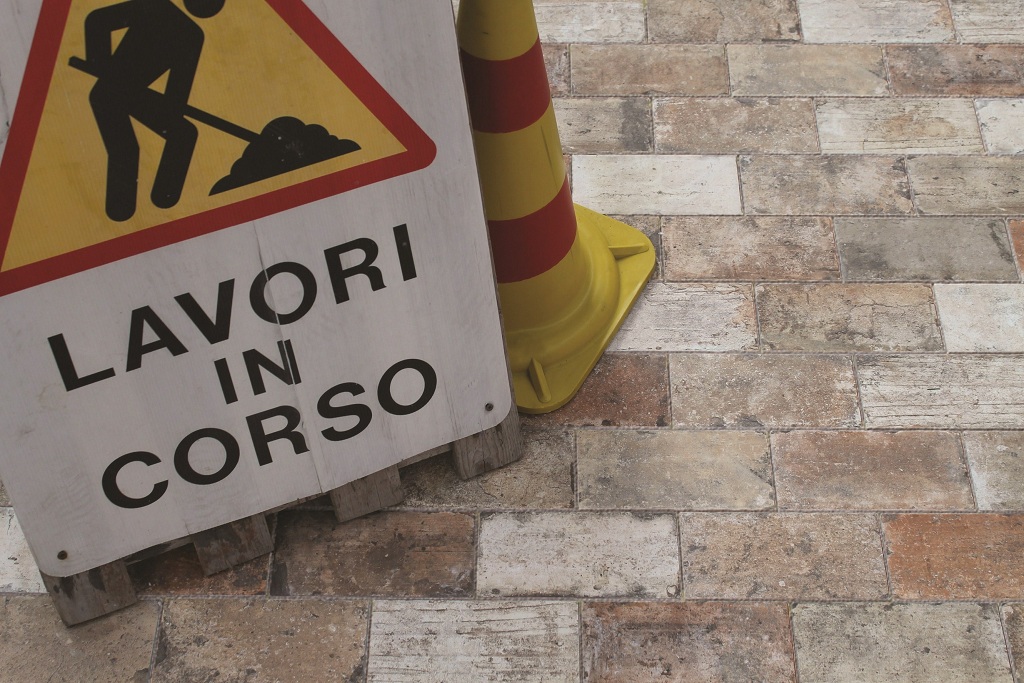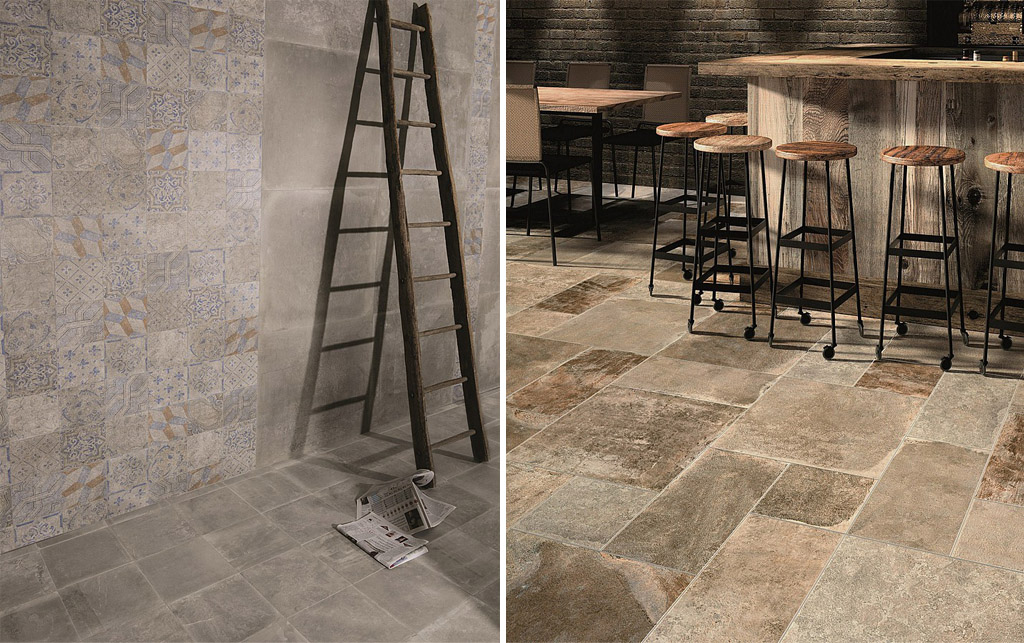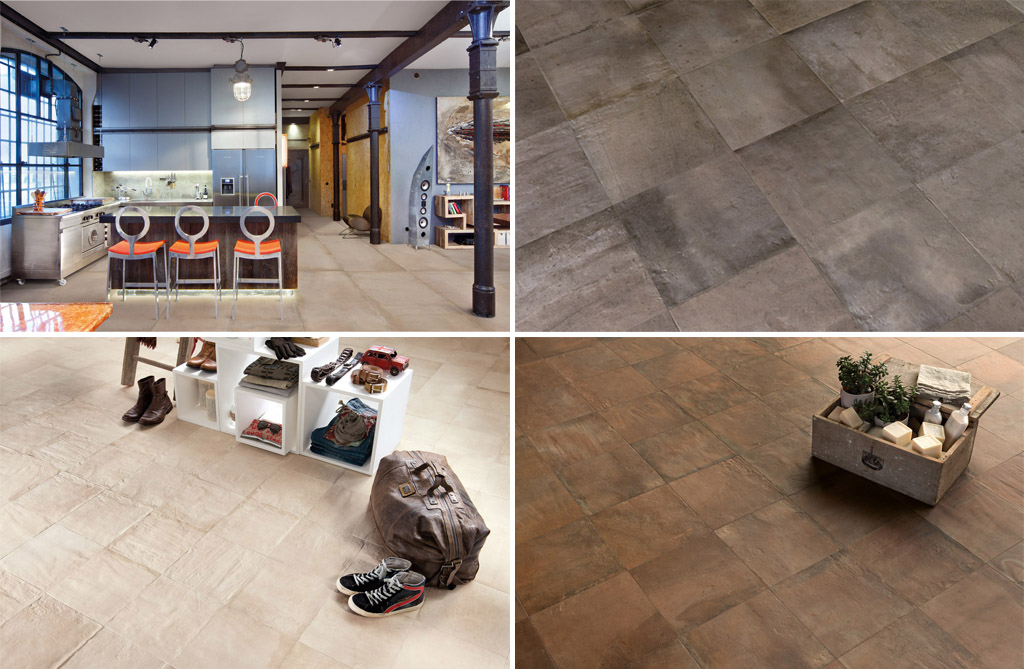The recent ceramic and porcelain tile exhibitions are characterized by, though not all-encompassing, but rather noticeable trend. In pursuit of excellence, tile manufacturers have focused on the very essence of materials to discard decorative knickknacks for the sake of rough, worn-out, unworked, half-finished, in other words, virgin, floor and wall surfaces. This benchmark approach is set in opposition to the cutting-edge technological advancements with a cult of ideally accurate tile dimensions, even edges, realistic emulation of any texture, attention to details and neat look.
The tile brands define this revolutionary aesthetic movement as “imperfect” emphasizing the unaccomplished, yet alluring beauty of such tile. The survey “Ceramic Trends of 2014-2015” prepared by the Institute of Ceramic Technologies in collaboration with Observatorio de Tendencias del Hábitat (Observatory of Habitat Trends) (both are located in Spain) defines this style as “Work in Progress”. “Imperfect” tile carefully reproduces industrial environments, feedstock and unworked materials in the minute details, unveiling their harsh, yet appealing beauty. Here, aesthetic effect is attained either through unaccomplished, defective finishing, or through vintage, deliberately aged, shabby surfaces, worn-out as a result of intense utilization. Indeed, the “imperfect” products may even look homebrew or defective. The philosophy of “imperfect” beauty is a statement of minor defects and flaws presented as advantages of significant aesthetic value.

Wood deserves particular attention, being one of the most flexible and adaptable materials, suitable for the designer experiments in the quest for “imperfect” beauty. The photo above features Monocibec tile with myriads of fine defects, artificially antiqued and stained ABK tile, as well as Rondine “shipboard planks” that have survived not a single storm.

Chicago collection by Cir has enjoyed the streamline success due to the appealing imitation of rough brickwork and stone. A short time later, Chicago was followed by New York.

Provenza Dust and Century Pantheon deserve close attention, being tile collections with unconventional stone effect. The former catches the eye by the ingenious patterns with deposit and sedimentary rock inclusions. The latter attracts by the unevenness of shade and pleasing tactile sensations.
What is more, many collections similar to “imperfect” tile, may be characterized as “Metropolitan”. This tile is conceived in the so-called industrial style. Here, the designers derive inspiration from versatile solid surfaces, commonly encountered in the urban context, such as stone, concrete, brick. Besides, all these materials may be fused in one tile. Sometimes they seem to have been restored from the aged materials. The unparalleled authentic look is attained through various effects, such as scratches, defects, cracks, patina, faded colors, traces of moisture, stains, etc.

Another expressive novelty, Acustico 12 by Viva Ceramica, is an unprecedented mix of stone and concrete enhanced by the texture of terracotta. Particular charm of Acustico 12 is accounted for the intentionally uneven, unworked surface, and the graceful dusty palette.

Imperfection, a Brand-New Trend in Tile Design 29.04.15
Questions & Answers Subscribe